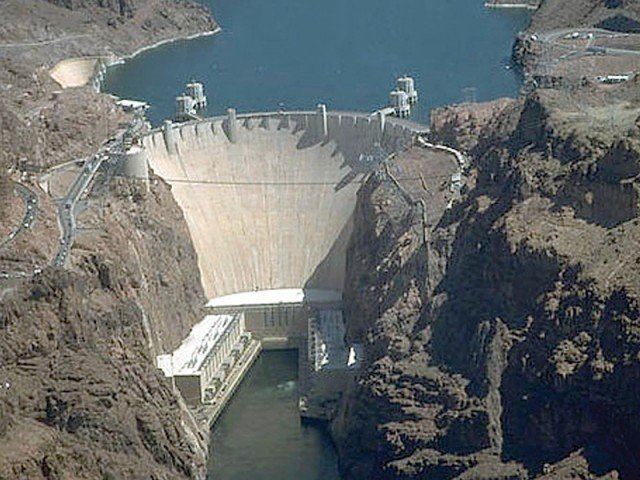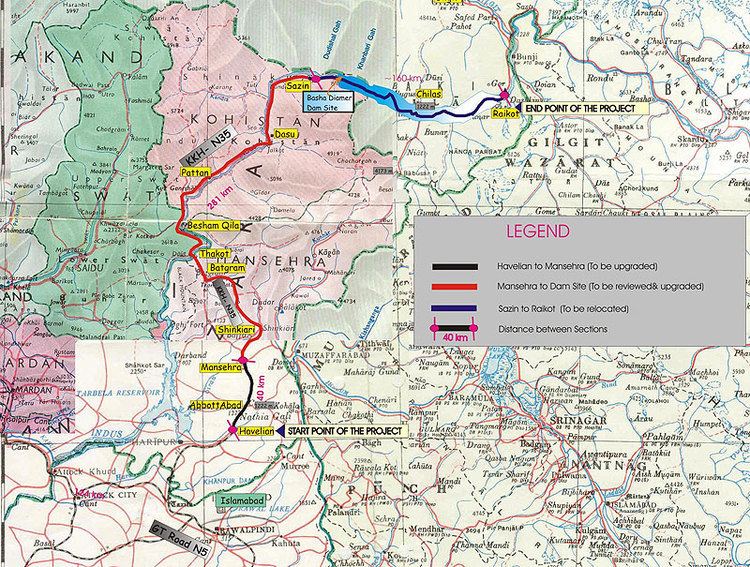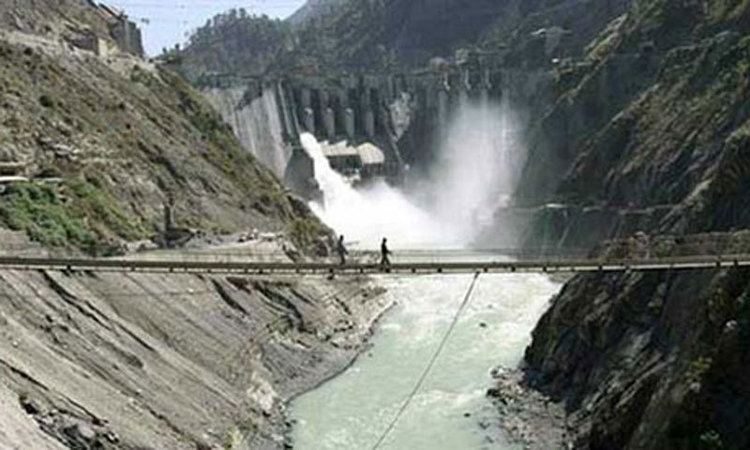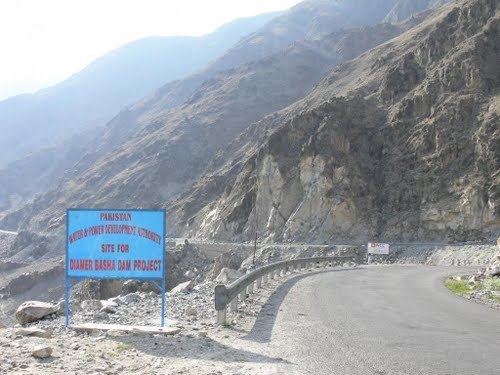Opening date 2020 (est.) Construction began 18 October 2011 | Height 272 m | |
 | ||
Status Preliminary construction Construction cost $14 billion (2013 est.) Owner Water and Power Development Authority Similar | ||
Diamer bhasha dam is as important as nuclear plans says pakistani minister
Diamer-Bhasha Dam is a gravity dam, in the preliminary stages of construction, on the River Indus in Gilgit-Baltistan, Pakistan. Its foundation stone was laid by Prime Minister Yusuf Raza Gilani of Pakistan on 18 October 2011, Majority funding being provided by Aga Khan Development Network. Upon completion, Diamer-Bhasha Dam would be the highest RCC dam in the world. The dam site is situated near a place called "Bhasha" in Gilgit-Baltistan's Diamer District, hence the name.
Contents
- Diamer bhasha dam is as important as nuclear plans says pakistani minister
- Background
- Construction Financial Matters
- Design
- Purpose and function
- Environmental impact and resettlement
- References

Upon completion, Diamer-Bhasha Dam would (i) produce 4,500 megawatts of electricity through environmentally clean hydropower generation; (ii) store an extra 8,500,000 acre feet (10.5 km3) of water for Pakistan that would be used for irrigation and drinking; (iii) extend the life of Tarbela Dam located downstream by 35 years; and (iv) control flood damage by the River Indus downstream during high floods.

It will have a height of 272 meters spillway with fourteen gates each 11.5 m x 16.24 m. The gross capacity of the reservoir will be 8,100,000 acre feet (10.0 km3), with a live storage of 6,400,000 acre feet (7.9 km3). Two underground power houses are being proposed, one on each side of the main dam having six turbines on each side with total installed capacity 4500 MW.

Background

In January 2006, the Government of Pakistan announced the decision to construct 5 multi-purpose storage dams in the country during next 10–12 years. According to the plan, Diamer-Bhasha Dam project was proposed in the first phase. In November 2008, the Executive Committee of National Economic Council formally approved the project. Council of Common Interests Pakistan, a constitutional body representing the provinces, also approved the construction of the dam. The Prime Minister of Pakistan laid the foundation stone of the project on 18 October 2011.
Construction & Financial Matters

In November 2008, the cost of the Diamer-Bhasha dam was estimated at $12.6 billion. and it will have a storage capacity of 8,100,000 acre feet (10.0 km3). However, it will have a power generation capacity of 4,500 megawatts.

An amount of Rs 27.824 billion is required for the acquisition of land & resettlement of the people to be affected in the wake of the construction of the dam. Under the proposed project, Rs 10.76 billion will be spent for the acquisition of agriculture-barren land, tree & nurseries and Rs 1.638 billion to be utilised for properties and infrastructure, Rs 8.8 billion for establishment of nine model villages, Rs 62.119 million for pay & allowances for administrative arrangements, and Rs.17.7 million for contingent administrative expenses. The project also includes an escalation cost of Rs 2.234 billion at the rate of 6 per cent per year for five years and interest of Rs 4.309 billion during the implementation at the rate of 9 per cent.
Detailed drawings of the dam were completed by March 2008. As of August 2012, the project faced several setbacks due to major sponsors backing out from financing the project, as World Bank and Asian Development Bank both refused to finance the project as according to them its location is in disputed territory and asked Pakistan to get a NOC from neighboring India.
On 20 August 2013, Finance Minister of Pakistan, Ishaq Dar claimed to have convinced the World Bank (WB) and the Aga Khan Development Network to finance the Diamer-Bhasha Project without the requirement of NOC from India. He also said that the Asian Development Bank, Aga Khan Rural Support Programme(AKRSP) and Aga Khan Foundation had agreed to become lead finance manager for the project.
On 27 August 2013, Pakistan's Finance Minister, Ishaq Dar said that work would start on both Dasu and Diamer-Bhasha Dams simultaneously. He also said that Diamer-Bhasha project would take 10–12 years to complete.
On November 7, 2013 the Chairman of WAPDA Syed Raghib Abbas Shah claimed that his department has received 17,000 acres of land at the cost of PKR 5.5 billion from Government of Gilgit-Baltistan and the Ismaili Community for the construction of the project.
On October 21, 2014, India, upset with a recent U.S. move to mobilize funds for a hydel-power project in Pakistan-administered Kashmir Azad Kashmir, will lodge a protest with U.S. President Barack Obama's administration for supporting a venture in a territory which it considers to be illegally occupied by Islamabad as per Instrument of Accession.
Design
The project is located on Indus River, about 315 km upstream of Tarbela Dam, 165 km downstream of the Northern Area capital Gilgit and 40 km downstream of Chilas.
Purpose and function
The main purpose of the dam is water storage, irrigation and power generation.
Environmental impact and resettlement
Environmental Impact:
• Villages affected: 31
• Houses affected: 4,100
• Population affected: 35,000
• Agricultural land submerged: 1,500 acres (6.1 km2)
• Area under reservoir: 25,000 acres (100 km2)
Resettlement:
• Proposed new settlements: 9 model villages
• Population resettled: 28,000
• New infrastructure, roads, clean water supply schemes, schools, health centres, electricity supply, etc.
• Development of new tourism industry in area around reservoir (including hotels, restaurants, water sports, etc.)
• Development of hitherto non-existent fresh-water fishing industry based on newly created reservoir
